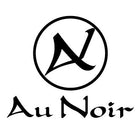A tuxedo and a suit is formal evening attire with satin detailing for black tie, and a suit is a versatile tailored set for daily and social wear, which frames the tuxedo vs suit decision.
Choosing between the two starts with the event and the dress code, highlighting the difference between a suit and a tuxedo . A tuxedo answers classic ceremony and formal occasions, while a suit adapts to offices, travel, and semi formal events.
This guide explains what is a tuxedo, clarifies the difference between suit and tuxedo, and shows when to wear each with confidence. You will learn how setting, time, and personal style shape the right choice for smart nights out
What is a Tuxedo?
A tuxedo is evening formal wear for black tie and black tie events. Hallmarks include satin lapels, a satin stripe or satin stripe running down tuxedo pants, and satin buttons. The tuxedo jacket may feature peak lapels or a shawl lapel, paired with a black bow tie, a tuxedo shirt with a wing collar, and patent leather dress shoes.
Many men choose classic black or midnight blue for a classic tuxedo or dinner suit. These looks are traditionally worn after dusk for evening events, including a black tie wedding, black tie dinners, and other special occasions.
What is a Suit?
A suit consists of a suit jacket and suit pants cut from the same fabric. Suits serve work, travel, and celebrations with ease. Suits typically include belt loops, can have flap pockets or jetted pockets, and use suit lapels like notch lapels or peak lapels without satin.
A business suit covers business meetings and daytime events. Lighter suits work well in warm weather and smart casual settings. A regular suit can look polished with a tie, or relaxed with open collar suit shirts for a smart casual look.
What Are The Differences Between A Tuxedo And Suit?
The key difference is formality and finish. A tuxedo carries satin trim and black-tie tradition. A suit is versatile and adapts to more settings. Those are the distinct differences that settle the tuxedo vs suit and suit debate for most wardrobes.
Formality
Tuxedo is for formal event tiers such as black tie, black tie affairs, formal weddings, galas, and evening events. The suit is for offices, business meetings, semi formal gatherings, and daytime celebrations.
Lapels
Tuxedo uses satin lapels such as peak lapels or shawl lapel for a formal appearance. The suit uses fabric lapels like notch lapels or peak lapels without satin.
Pantalons
Tuxedo pants often have a satin stripe, side adjusters, and no belt. Suit pants use belt loops and no satin trim.
Accessories and Shirts
Tuxedo styling includes black bow tie or formal bow tie, a pleated or pique shirt with wing collar, and patent leather shoes. Suit styling allows long ties or long ties, varied dress shoes, and many suit shirts.
Naming and History
Tuxedo is also called a dinner suit or dinner jackets, with a rich history in evening formal attire. Suit is the adaptable staple for daily life with matching trousers and countless fabrics.
Quick Comparisons
Trim:
- Tuxedo: satin detailing, satin lapels, satin stripe
- Suit: No satin
Shirt:
- Tuxedo: Formal with wing collar optional
- Suit: Standard suit shirts
Tie:
- Tuxedo: black bow tie preferred
- Suit: Tie or no tie
Pants:
- Tuxedo: tuxedo pants without belt loops
- Suit: suit pants with belt loops
Events:
- Tuxedo: black tie events, formal occasions
- Suit: Work, semi formal events, social
Colors:
- Tuxedo: typically black, midnight blue
- Suit: Broad range including black suit and lighter suits
When Should You Wear a Tuxedo?
A tuxedo is the standard for evening black tie codes and high-formality settings.
Wear a tuxedo for:
- Black tie events, galas, award nights, and formal receptions during evening events
- A black tie wedding and other formal weddings where ceremony and photos call for timeless elegance
- Invitations that specify classic black tie, formal event, or a night-only formal suit dress code
Match the code with classic elements:
- Tuxedo jacket with satin lapels and covered buttons
- Tuxedo pants with a satin stripe along the outseam
- A black bow tie or formal bow tie, a wing-collar shirt, and patent leather shoes
If you are unsure, read the invitation closely. If it states black tie or lists a night-time formal suit requirement, choose a tuxedo and follow the accessories that fit the code. Some cards mention white tie, which is rarer and more formal than black tie, so confirm expectations with the host.
Choose a tuxedo when the invite calls for black tie, when the setting is ceremonial, or when you want the most polished look for evening. The significant difference lies in the details, from satin lapels to the satin stripe and a black bow tie. When those cues appear, a tuxedo is the right choice.
When Should You Wear a Suit?
A suit is a versatile tailored set in the same fabric that fits offices, daytime ceremonies, and polished social plans.
Choose a suit for:
- Daytime weddings, receptions without black tie, and semi formal events
- Offices, interviews, and business meetings where a business suit is expected
- Evenings that ask for refined style without satin trim, where a black suit works well
Seasonal and styling tips:
- Rotate lighter suits in warm months and textured wool in cooler weather
- Pair a suit jacket and suit pants with crisp suit shirts, classic ties, and clean dress shoes
- Set the tone from boardroom to dinner by adjusting shirt, tie, and shoe choice for a smart casual look
Brand-forward picks:
- Explore tailored options in men's suits and elevate your rotation with paul betenly suits for modern structure and comfortable wear
Reach for a suit when the invitation does not require black tie, when the event is daytime or semi formal, or when you want adaptable, confident style. Keep fabrics season-appropriate, finish with the right accessories, and let fit carry the look.
Style Features of Tuxedos and Suits
Tuxedos elevate with satin. Suits adapt with fabric variety. Here is what to look for as you compare tuxedos and suits.
-
Tuxedo Jacket: choose peak lapels for sharp lines or a shawl lapel for smooth curves.
-
Pocket Trim: tuxedos may keep pockets jetted for a sleek finish.
-
Satin Detailing: lapels, pocket trim, buttons, and the satin stripe on pants define the dressier set.
-
Suit Jacket: features flap pockets, notch lapels, vents, and functional details fit for daily wear.
-
Fine Materials: both can be tailored in premium wools. Tuxedos lean to smooth finishes for a clean, formal appearance.
-
Matching Trousers: both use matching trousers cut from the same fabric, though only the tuxedo has satin accents.
Factors to Consider When Choosing
Start with the event, then choose the level of formality you need.
- Event and code: black tie dinners, formal weddings, or gala nights favor a tuxedo. Semi formal events and business meetings call for suits.
- Time of day: tuxedo fits night, suit fits day or night.
- Climate: choose lighter suits for heat and heavier cloth for winter.
- Frequency of wearing: a suit earns more weekly mileage.
- Personal style: tuxedo delivers polish for special occasions, suit allows more variety.
If you only own one tailored set, a suit covers more ground. If you attend frequent formal nights, invest in a tuxedo for a confident, code-correct finish.
Conclusion
Your tuxedo vs suit decision starts with the dress code and ends with how you want to show up in the room. A tuxedo, with its satin detailing, is built for black tie and evening formal occasions. A suit carries you through offices, daytime plans, and semi formal settings with range and comfort.
Let personal style refine the choice once the code is clear.
Key Takeaways:
- Read the invite first and follow the dress code.
- Choose a tuxedo for black tie and high-formality formal occasions.
- Choose a suit for daytime and semi formal plans where versatility matters.
- Use fit, fabric, and accessories to fine tune your look so it feels like you.
Keep the difference between a tuxedo and suit simple by recognizing key features. Satin trim, formal accessories, and evening events point to a tuxedo; fabric lapels, flexible styling, and broader wear point to a suit. Choose the option that suits your personal style. The right choice helps you arrive polished and ready.
FAQs
Can I wear a tuxedo to a daytime event?
A tuxedo belongs to evening formal occasions and is a staple of formal attire . Choose a suit for daytime or semi formal events.
Is it acceptable to wear a necktie with a tuxedo?
A black bow tie is standard. Some modern hosts accept long ties, but classic black tie favors a bow.
What shoes should I wear with a tuxedo?
Choose patent leather or impeccably polished oxfords for a clean, ceremonial finish.
Do tuxedo pants have belt loops?
No. Tuxedo pants use side adjusters or braces. Suit pants usually include belt loops.







